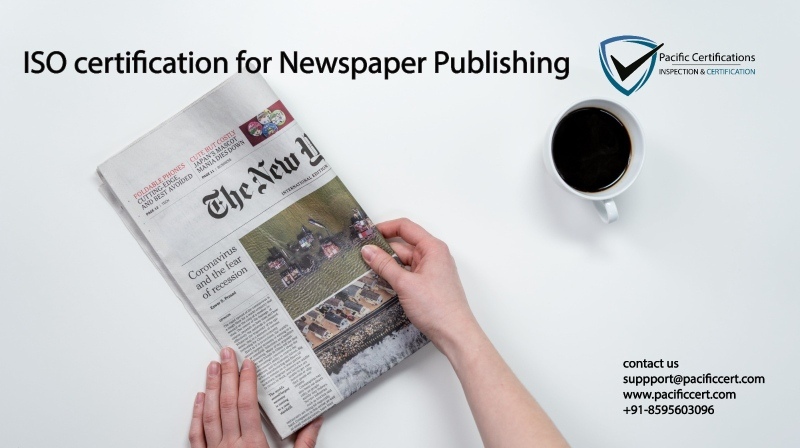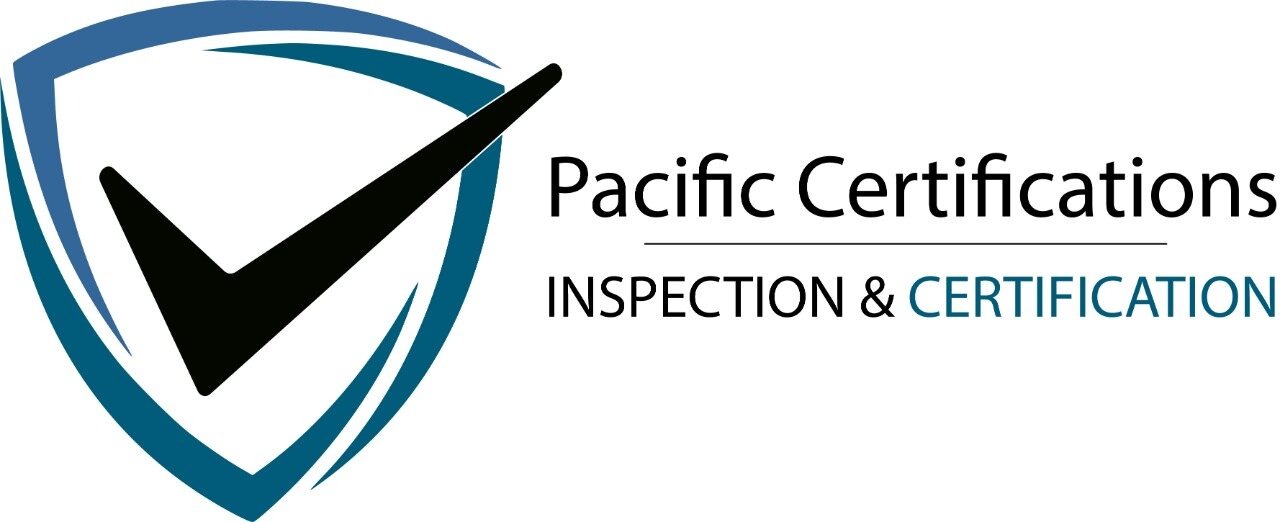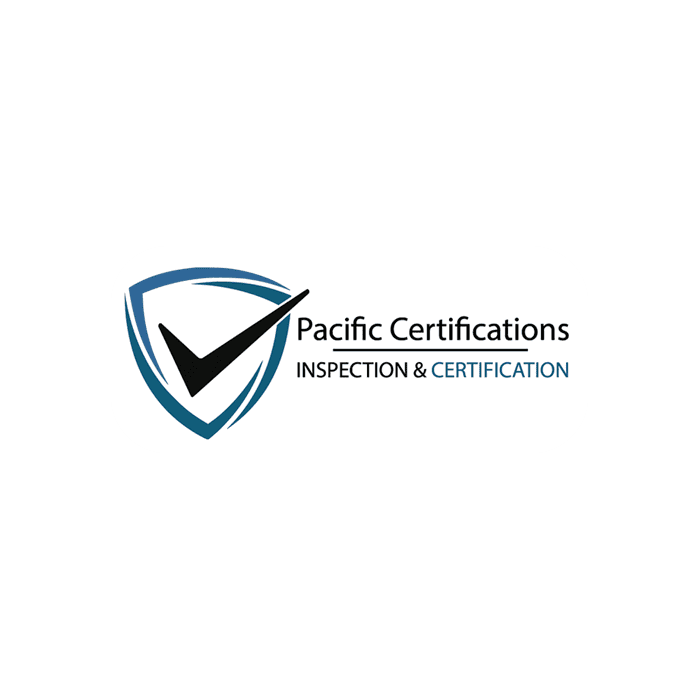ISO certifications for Newspaper Publishing Businesses, Requirements and Benefits

To obtain ISO certification for a newspaper publishing organization, several ISO standards could be applicable, depending on the specific areas of operation and management within the organization. Pacific Certifications, as an accredited certification body, can guide you through the process of achieving these certifications. Here are some key ISO standards that are often relevant to newspaper publishing:
Purpose: Establishes a framework for quality management and continuous improvement. This standard is beneficial for ensuring that the newspaper maintains a consistent quality in its operations, including content production, printing, and distribution.
Key Elements: Customer focus, leadership, engagement of people, process approach, improvement, evidence-based decision making, and relationship management.
Purpose: Provides guidelines for effective environmental management, helping organizations minimize their environmental footprint. This is particularly relevant for managing the environmental impacts of printing and distribution.
Key Elements: Environmental policy, planning, implementation, operation, checking, and management review.
ISO 45001: Occupational Health and Safety Management Systems
Purpose: Helps organizations improve employee safety, reduce workplace risks, and create better, safer working conditions. This is crucial for the physical safety of employees involved in printing and distribution.
Key Elements: Worker participation and consultation, hazard identification and risk assessment, emergency preparedness and response, and performance monitoring and improvement.
Purpose: Provides a framework for managing the security of information assets, including digital data security, a critical aspect for newspaper publishers in the digital age.
Key Elements: Information security policies, organization of information security, human resource security, asset management, access control, and information security incident management.
Purpose: Ensures the resilience of business operations, including the ability to continue publishing in the event of significant disruptions.
Key Elements: Business continuity policy, objectives, risk assessment, business impact analysis, and business continuity strategy.
Click here to find out more applicable standards to your industry
To achieve these certifications, a newspaper publishing organization would typically need to undergo a process that includes:
Gap Analysis: Assessing current practices against the requirements of the standards.
Documentation: Developing policies, procedures, and records that comply with the standards.
Implementation: Integrating these processes into daily operations.
Internal Auditing: Checking the effectiveness of the system and identifying areas for improvement.
Management Review: Ensuring top management's commitment and alignment with the standard's requirements.
Certification Audit: Conducted by an external body like Pacific Certifications to verify compliance with the standard.
We at Pacific can facilitate this process by providing guidance, conducting audits, and issuing the certifications upon successful compliance. For more detailed assistance and to initiate the certification process, you can reach out to our team at Pacific Certifications at [email protected].
Requirements & benefits of ISO certification of Newspaper Publishing
ISO certification for newspaper publishing involves meeting specific requirements set forth by various ISO standards, each tailored to different aspects of the publishing process. These certifications can bring numerous benefits to a newspaper publishing organization. Let's delve into the requirements and benefits of some key ISO standards that are often applicable in this context.
ISO 9001: Quality Management Systems
Requirements:
Establish a quality management system with documented procedures and policies.
Implement a process for continuous improvement.
Ensure customer focus and commitment to delivering quality products and services.
Conduct internal audits and management reviews.
Benefits:
Improved product and service quality, leading to higher customer satisfaction.
Enhanced operational efficiency and productivity.
Greater consistency in the delivery of your newspaper and associated services.
Competitive advantage in the market.
ISO 14001: Environmental Management Systems
Requirements:
Develop an environmental policy and objectives aligned with legal requirements and environmental impacts.
Implement procedures to manage and mitigate environmental impacts.
Continuously monitor and improve environmental performance.
Train employees on environmental practices.
Benefits:
Reduced environmental impact of operations, particularly in printing and distribution.
Enhanced corporate image and compliance with regulatory requirements.
Potential cost savings in waste management, recycling, and consumption of energy and resources.
Improved stakeholder relationships and market opportunities.
ISO 45001: Occupational Health and Safety Management Systems
Requirements:
Establish a framework for identifying and controlling health and safety risks.
Develop and implement an occupational health and safety policy and objectives.
Ensure worker safety, especially in potentially hazardous areas like printing presses.
Conduct regular risk assessments and safety training.
Benefits:
Safer workplace environment, reducing the risk of accidents and injuries.
Compliance with legal and regulatory requirements.
Improved employee morale and engagement.
Reduced absenteeism and employee turnover rates.
ISO/IEC 27001: Information Security Management
Requirements:
Implement an information security management system (ISMS).
Identify and assess information security risks.
Establish security controls and policies to manage risks.
Regularly review and update the ISMS.
Benefits:
Enhanced security of sensitive information, including sources, unpublished content, and subscriber data.
Increased resilience against cyber threats.
Improved customer and stakeholder confidence.
Competitive advantage in an industry increasingly reliant on digital platforms.
General Benefits of ISO Certification in Newspaper Publishing:
Market Differentiation: Certification can set a newspaper apart from competitors, showing a commitment to high standards.
Compliance and Risk Management: Helps in aligning with legal and regulatory requirements, reducing the risk of non-compliance penalties.
Operational Efficiency: Streamlined processes lead to cost savings and better resource management.
Global Recognition: ISO certifications are internationally recognized, which can be advantageous in expanding the business or collaborating internationally.
Customer Trust and Loyalty: Demonstrates a commitment to quality and reliability, fostering trust among readers and advertisers.
We at Pacific Certifications can provide detailed guidance on the requirements for each standard and assist with the implementation and audit process to ensure successful certification.
Pacific Certifications is accredited by ABIS, in case you need support with ISO certification for your business, please contact us at [email protected] or +91-8595603096.

Read more: ISO certification for Music Publishing and Sound Recording and applicable standards
